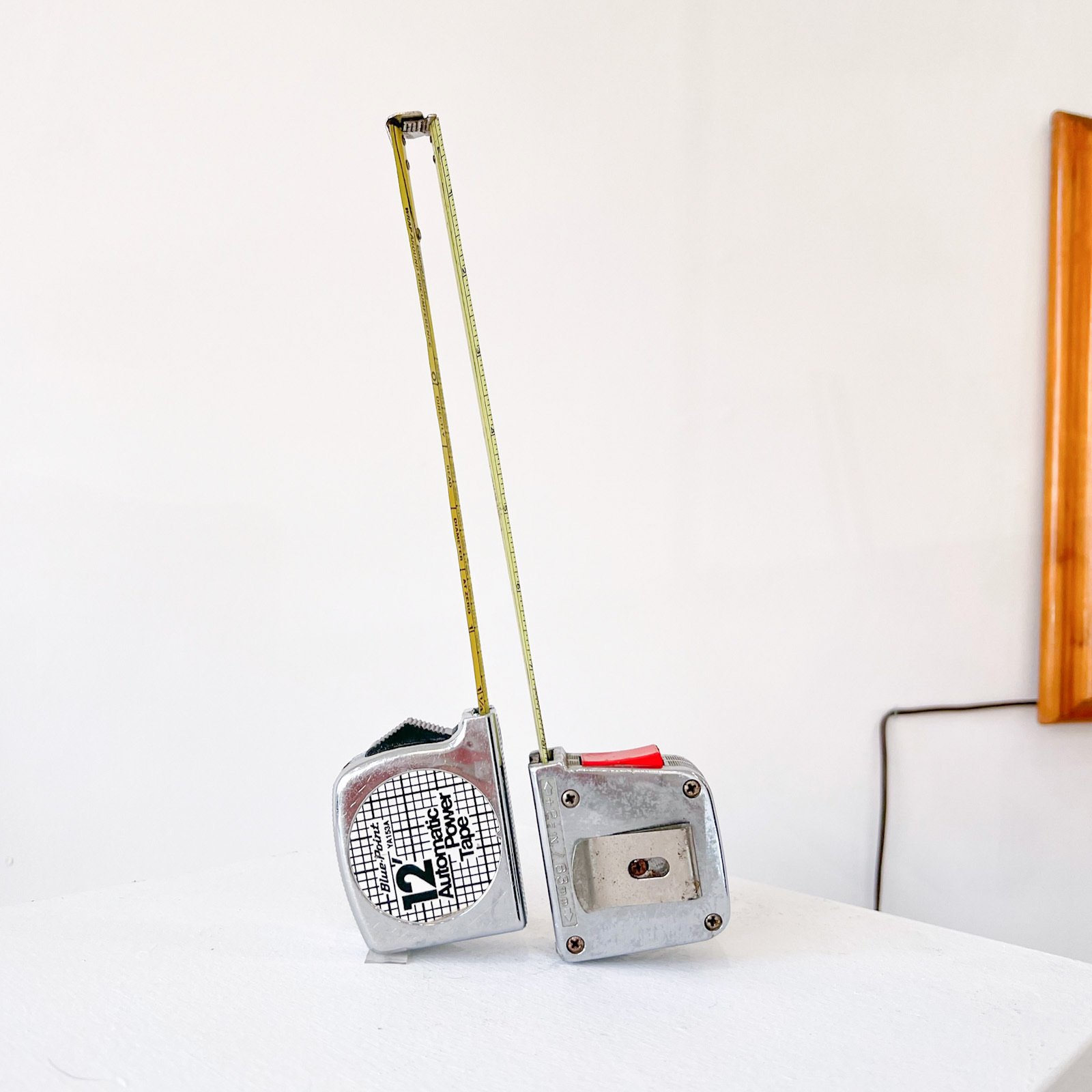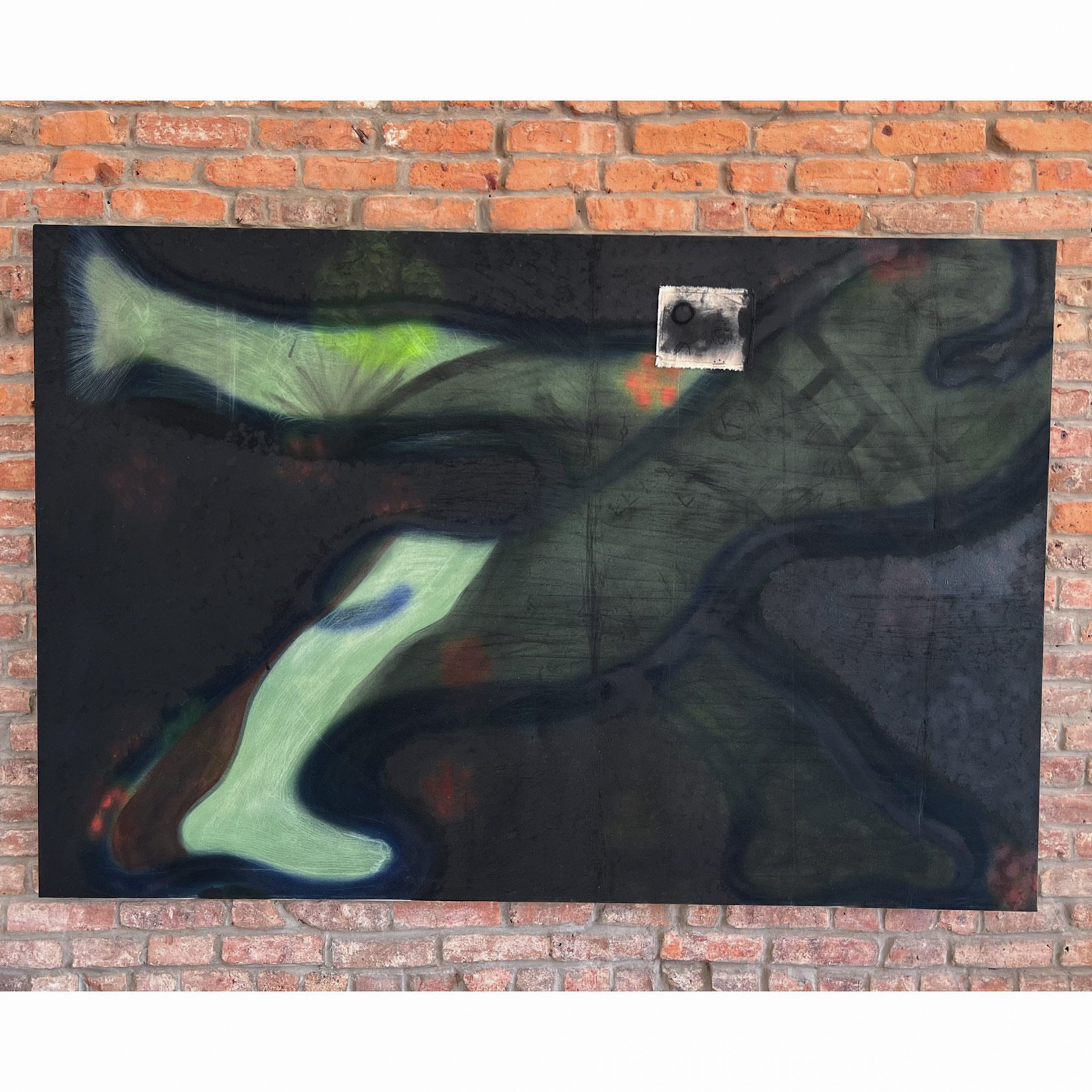A Conversation with Olivia Gossett Cooper
Olivia Gossett Cooper in her studio, New York. Courtesy the artist and The Empty Circle.
Olivia Gossett Cooper (b. 1988) is a New York-based conceptual artist, working across media to examine the small nuances of humanity. Her works has looked into the future with futurism-inspired paintings and referenced our past with carvings in wood and stone. For her most recent series (2024-2025), Cooper uses video, works on paper, and found home object sculpture to explore the story of power dynamics within the home - between the people, systems, and tools within it. Returning to the arts from maternity leave in 2023, Cooper’s most recent activity includes a series of group shows, including at Second Ave Arts, Arbor Gallery and upcoming in 2025 at Westbeth. She has been shown at Art Prize’s art fair in Michigan and 2024 Art Week Miami. Cooper lives and works in Tribeca, NY.
As part of Forms of Dynamics, Olivia Gossett Cooper’s debut solo exhibition in New York City at The Empty Circle, the artist sat down with Arte Realizzata to discuss the layered meanings behind her evolving practice. Known for her exploration of motion—both as a physical force and a conceptual framework—Cooper brings together paintings and sculptures that trace her deep engagement with the body, narrative, and environment. In conversation with Renata Muggenburg, she reflects on the influence of Futurist aesthetics, the emotional charge of materiality, and how her work navigates the intersections of movement, tension, and human connection.
RENATA: Forms of Dynamics, currently on view at The Empty Circle, brings together three distinct phases of your practice. How do you see these periods in dialogue with one another? Is there a thread that has remained consistent across your explorations of motion, narrative, and power?
OLIVIA: In the gallery, there is a chair. Opening night, people kept asking me, “Is this chair part of the exhibition?”. (It’s not.)
Just a minute ago, it was only a chair, now it’s got potential to be so much more. I love that people leave the exhibition with a new look on the everyday around them. It’s the artistic thread that weaves my work together — giving spotlight to overlooked pieces of humanity. For this presentation, specifically, The Empty Circle director Matt Nasser and I put together pieces that spoke to overlooked but very influential dynamics between object and human, human and human, and object and object.
R: Your early works engage with the dynamism of movement, drawing from Futurism. How did you approach translating that energy into sculpture, a traditionally static medium?
O: Painting didn’t align with my values of living sustainably, though I’m grateful for the amazing paintings that do exist.
After a year of exploring new materials, and landed on remnant stone, carving, and natural pigments. I liked the idea of continuing to tell the story of our future through an aesthetic borrowed from our ancient past. The spirit of dynamism was kept through the subjects — moving forms, nods to forwarding-technology, and this idea of humanity always moving up, up, up (especially in ‘Don’t Look Down’.)
Installation view. Courtesy the artist and The Empty Circle.
R: In this exhibition, you transition from a focus on external movement to the subtler, often unseen forces within domestic spaces. What led you to turn inward, and how do you define “dynamics” in the context of the home?
O: I’m an artist, but I’m also a mom of two boys. A wife. I have a dog. I have dishes to clean. Plans to negotiate. And, this is life. How can I tell nuanced stories of humanity if I don’t include the subtle little events inside my own life? A split-second moment at home can hold so much meaning, its story just needs to be told correctly.
Dynamics in the home is like a web with a player at each end. At any moment, any player can tug on the web, shifting the dynamics away from center or from another player and creating a new playing field. Suddenly the energy, the power, and focus is on them and the other players need to adapt accordingly.
Installation view. Courtesy the artist and The Empty Circle.
R: Your recent sculptures incorporate found objects from domestic life—from a washing machine to a dress shoe. What draws you to these materials, and do you see them as vessels of personal or collective memory?
O: After working with stone, I felt its power, but realized how fragile it can be. The first piece in the found-object series, ’Power’, was river rocks in a glass blender. I realized there was much more to tell in this arena. I put down my chisel and got on the subway to the nearest secondhand market. It grew from there.
It can take me months to find just the right object to complete a piece. There is a delicate balance between thrown together and thoughtfully crafted. Like how a painter knows their painting is finished, I know when I have found the right objects for a piece.
I’m also drawn to the sustainable nature of this work. Giving unwanted items a second life and new meaning is a dream come true for me in that sense.
The dynamics that each sculpture represents is meant to feel collective — we’ve all experienced leverage, for example. But, each person’s story with that dynamic is meant to be personal.
R: There’s a strong interplay between authority, utility, and intimacy in your latest series. How do you navigate these tensions within your work?
O: It can’t be obvious which part of the sculpture is more powerful, or what will happen next or if a sculpture is activated. That creates that wonderful tension, and has us playing the personal stories in our heads, because, I haven’t told you how these end or what happens, that’s up to your memory and relationship with each dynamic.
Installation view. Courtesy the artist and The Empty Circle.
R: Your practice has evolved from figurative paintings to sculptural works that reinterpret those figures in new contexts. Do you view these shifts as a form of rewriting or recontextualizing history?
O: Maybe recontextualizing reality. We have a tendency to just go, go, go without taking pause to reflect on what the heck we’re doing here. I try to give the viewer a moment to ponder the reality we’ve created, if just for a moment.
The form is a symbol of humanity. In the paintings, it represented us moving at speed into the future, but I wasn’t really clear where. The stone sculpture works took that symbolism deeper and placed it in the context of our relationship with the world at large.
Installation view. Courtesy the artist and The Empty Circle.
R: Having recently returned to the studio after maternity leave, has this experience influenced your perspective on power dynamics, especially in the context of domestic life?
O: Understanding home dynamics starts young. As a parent now, I understand the nuance of those dynamics. Everything that comes out of my mouth at home is influenced by some power dynamic at play. I didn’t realize that until becoming a mom and wife.
Installation view. Courtesy the artist and The Empty Circle.
R: Your work is deeply conceptual yet remains rooted in materiality. Do you find that certain materials—or the act of making itself—carry their own inherent sense of movement or tension?
O: Absolutely. Before creating a gaping hole on the dishwasher featured in ‘Outburst’ (saw atop a dishwasher with metal spikes coming out of a gaping hole, 2024), I set up a camera to record the process. Now, the video of me creating the hole (which was not easy) is its own piece, ‘The Dishwasher’. There’s a relationship between me and the dishwasher in the video, which there always was, but the video helps highlight it. In the end, you kind of feel bad for the damn thing.
With ‘Level’, the balance needed to maintain its upright posture is key to the tension of the piece. If the two measuring tapes lean on each other in any wrong way, the whole thing falls apart. Much like two people leaning on each other in life.
For more information about Olivia’s artwork, please visit her site here, Olivia can also be found on Instagram. For more information about her current exhibition at the Empty Circle, please visit here.





